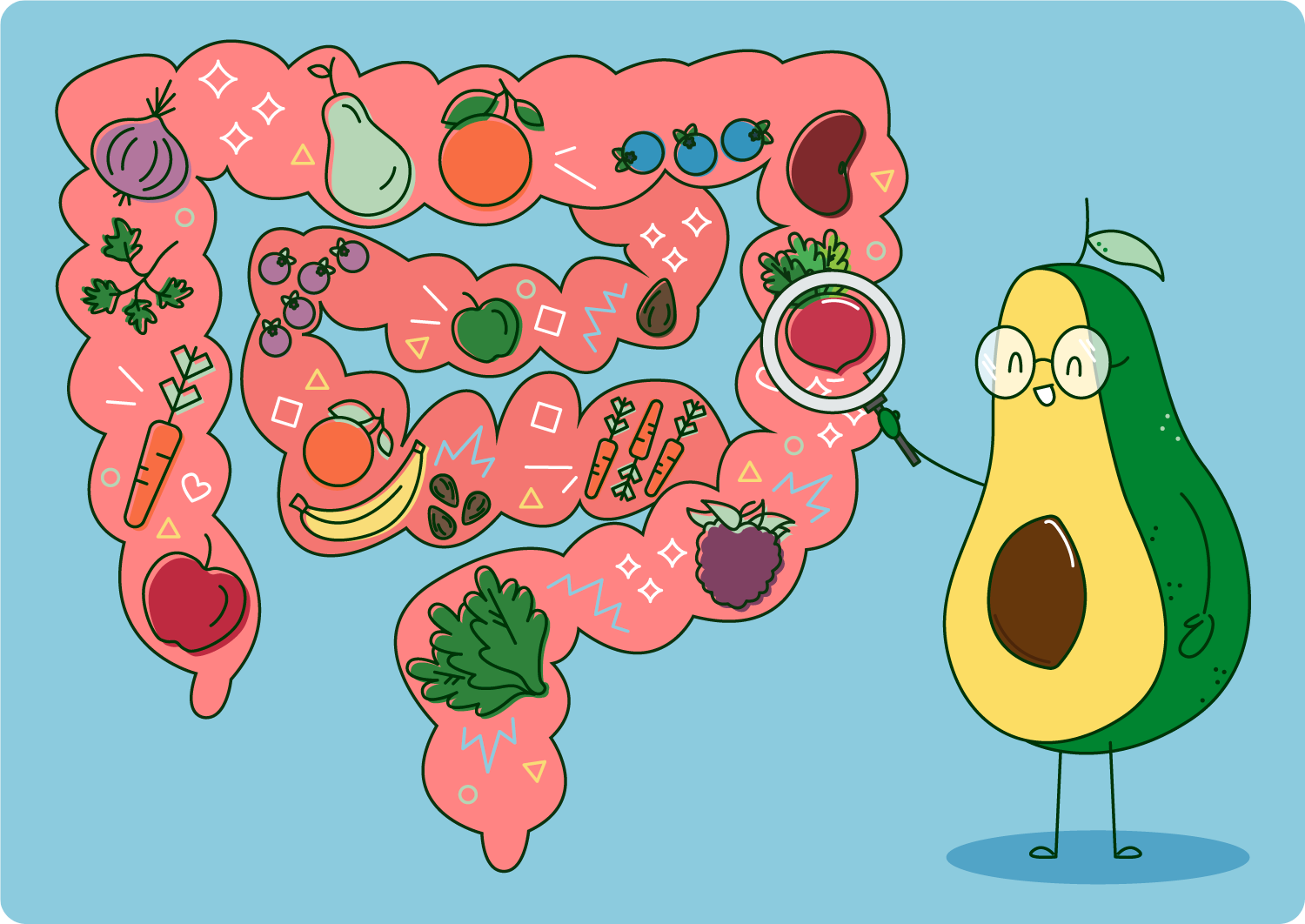
Overview
Celiac disease is a chronic autoimmune disorder in which the ingestion of gluten, a protein found in wheat, barley, and rye, causes the immune system to attack and damage the small intestine. The damage caused by the immune system can lead to a variety of symptoms such as abdominal pain, bloating, diarrhea, weight loss, and fatigue. Over time, prolonged exposure to gluten can lead to long-term complications such as malnutrition, osteoporosis, and even an increased risk of certain types of cancer. The only treatment for celiac disease is a strict gluten-free diet, which can be challenging to maintain, but is effective at managing symptoms and prevent further damage to the intestines.
There are more than 200,000 diagnosed cases of Celiac disease each year in the U.S. The exact cause of celiac disease is not yet fully understood, but it is believed to be a combination of genetic and environmental factors.
There are four stages of celiac disease, each with its own symptoms and severity:
1. Latent celiac disease: The earliest phase of the disease when the individual does not exhibit any typical symptoms of celiac disease yet but has a genetic predisposition to the condition.
2. Silent celiac disease: As the condition progresses, the individual may not display any noticeable symptoms, but they would test positive for celiac disease through blood tests or intestinal biopsies.
3. Non-classic celiac disease: This stage is characterized by the appearance of atypical symptoms such as anemia, fatigue, neurological issues, and skin disorders.
4. Classic celiac disease: At this stage, the individual exhibits the typical gastrointestinal symptoms of celiac disease, including bloating, abdominal pain, diarrhea or constipation, weight loss, and malnutrition due to an inability to absorb nutrients from ingested food.
Enroll in the program today!

Celiac Disease Symptoms and Causes
Celiac Disease Symptoms and Causes
When individuals with Celiac disease consume gluten, their immune system triggers an inflammatory response that damages the lining of the small intestine. This can lead to a wide range of symptoms and complications. Here is an overview of the symptoms and causes of celiac disease:
Celiac Disease Symptoms:
1. Digestive Symptoms: Abdominal pain, bloating, diarrhea, constipation, and vomiting are common digestive symptoms. Some individuals may experience pale, foul-smelling stools.
2. Malabsorption: Damage to the small intestine can impair nutrient absorption, leading to weight loss, nutrient deficiencies, and associated symptoms such as fatigue, weakness, and anemia.
3. Skin Issues: Dermatitis herpetiformis, a skin rash characterized by itchy, blistering lesions, is a common symptom of celiac disease.
4. Growth and Development Issues: Children with untreated celiac disease may experience delayed growth, failure to thrive, and delayed puberty.
5. Neurological Symptoms: Some individuals may experience neurological symptoms like headaches, migraines, peripheral neuropathy, and problems with balance and coordination.
6. Bone and Joint Pain: Celiac disease can contribute to weak, brittle bones (osteoporosis) and joint pain.
7. Mood Disorders: Mood swings, depression, anxiety, and irritability can be associated with celiac disease.
While many symptoms of Celiac disease are experienced as gastrointestinal issues, other symptoms like joint paint, fatigue and skin disorders may present themselves. Read more about these atypical symptoms here.
Causes of Celiac Disease:
1. Genetic Predisposition: Celiac disease has a strong genetic component. It is more common in individuals who have specific genetic markers, particularly the human leukocyte antigen (HLA) DQ2 and DQ8 genes. 2. Environmental Triggers: While having the genetic predisposition is necessary, environmental factors play a role in the development of celiac disease. The consumption of gluten-containing foods is the main trigger for the immune response. 3. Autoimmune Response: In individuals with celiac disease, the immune system mistakenly identifies gluten as harmful and launches an immune response, causing damage to the small intestine. 4. Other Factors: Certain factors, such as gastrointestinal infections, early exposure to gluten in infancy, and certain medical conditions like type 1 diabetes and autoimmune thyroid disease, may increase the risk of developing celiac disease. It’s important to note that the symptoms of celiac disease can be similar to those of other conditions, such as Irritable Bowel Syndrome (IBS) and lactose intolerance. If you experience symptoms of Celiac disease, it’s important to see a doctor for an accurate diagnosis. A doctor may perform blood tests, or biopsy the small intestine to confirm a diagnosis of Celiac disease.
Celiac Disease Diagnosis
1. Blood Tests: A doctor may order a blood test to check for certain antibodies that suggest a person has Celiac disease.
Those with the condition will have higher than normal Tissue Transglutaminase (tTG-IgA), and IgA antibodies. IgA Endomysial antibody (EMA) is another, less common marker that can be tested—and is often more expensive to test for compared to other markers. Regardless of which test you proceed with, ensure gluten remains in your diet prior to the test for an accurate reading.
Genetic testing is another option and best for those who have a family history of Celiac disease. Those with the condition carry one or both of the HLA DQ2 or DQ8 genes, however, carrying either gene does not necessarily mean you have or will develop Celiac disease, although your risk is heightened.
2. Biopsy: If blood tests suggest Celiac Disease, a doctor may biopsy the small intestine to determine whether there is damage consistent with the disease.
An Intestinal biopsy can be performed to diagnose Celiac disease or test for other gastrointestinal conditions. This approach is known as the “gold standard.” A sample of your mucosal tissue is taken through an endoscopy — a procedure in which a scope is inserted through your mouth and down your GI tract, presenting a clear view of your gut. A sample can show any changes in the cells that line the small intestine, show damage to the villi, inflammation, and more.
It is important to speak with a healthcare provider if you are experiencing symptoms or believe you may have Celiac Disease. They can provide appropriate testing recommendations and diagnosis.

Celiac Disease Treatment
The primary treatment for celiac disease is strict adherence to a gluten-free diet. Here is an overview of the options for celiac disease treatment:
1. Gluten-Free Diet: The cornerstone of celiac disease management is eliminating gluten from the diet. This involves avoiding all foods and beverages containing wheat, barley, and rye. Individuals with celiac disease must carefully read food labels, choose gluten-free alternatives, and be cautious of cross-contamination in food preparation. Working with a registered dietitian experienced in celiac disease can be highly beneficial for developing a safe and balanced gluten-free diet.
2. Medications: In certain cases, medications may be used as adjunctive therapy for celiac disease. For example, corticosteroids or immunosuppressants may be prescribed to control symptoms and reduce intestinal inflammation in severe or refractory cases. However, medications are typically reserved for specific situations and are not a substitute for a gluten-free diet.
3. Nutritional Supplements: Celiac disease can lead to nutrient deficiencies due to malabsorption in the small intestine. Supplements may be recommended to address specific deficiencies, such as iron, calcium, vitamin D, and B vitamins. It's important to consult with a healthcare professional to determine the appropriate supplements based on individual needs.
4. Ongoing Monitoring: Regular follow-up appointments with a healthcare team, including gastroenterologists and dietitians, are crucial to monitor the response to the gluten-free diet and assess any nutritional deficiencies. Periodic blood tests, including antibody tests and nutrient levels, can help track progress and ensure optimal management of celiac disease.
5. Support and Education: Living with celiac disease can be challenging, and support from patient advocacy groups, support groups, and online communities can be beneficial. These resources can provide information, emotional support, and practical tips for managing the gluten-free lifestyle.
It's important to note that a gluten-free diet is a lifelong commitment for individuals with celiac disease, as even small amounts of gluten can cause damage to the intestines. Working closely with healthcare professionals and adhering strictly to a gluten-free lifestyle are key to effectively managing celiac disease and maintaining good health.
Foodsmart offers one-on-one nutrition counseling with a registered dietitian, as well as the Celiac Nutrition Program and the Healthy Gut Nutrition Program. Our nutrition programs are designed to help you manage symptoms of Celiac disease or gluten intolerance, and are customized to your specific needs.
Explore more helpful resources and Celiac-friendly tips, like foods to eat and avoid with celiac disease.

Gastroenterlogoist & Primary Care Provider (PCP)
A primary care provider can help with diagnosis, treatment and referral to a Gastroenterologist. Gastroenterologist is a medical specialist in gastrointestinal diseases, such as celiac disease, who can assist with the diagnosis and management of celiac disease.
Registered Dietitian Nutritionist
A registered dietitian nutritionist is clinically trained to treat any medical condition with nutrition, including Celiac disease. Working with a Foodsmart registered dietitian can help ease the transition to a gluten-free lifestyle. Your personal dietitian can help guide your food choices and offer product recommendations, recipes, and meal plans to heal your digestive system and alleviate symptoms triggered by gluten intolerance. Meet with a registered dietitian today.






